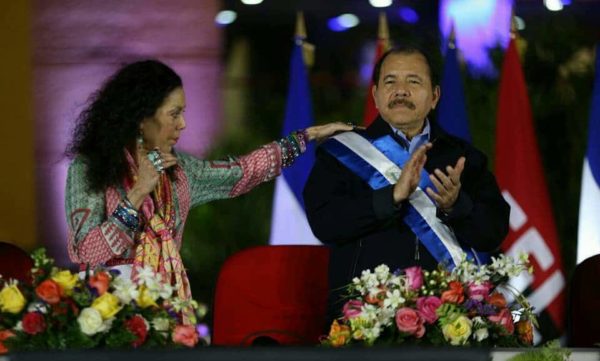The Throwback of Daniel Ortega in Nicaragua

Editorial from Mexican daily “La Jornada” (Confidencial)
HAVANA TIMES – Legendary Sandinista combatants Dora Maria Tellez and Hugo Torres, along with activist Ana Margarita Vijil, were taken prisoner on Sunday, June 13th. They’ve been imprisoned by the regime of Daniel Ortega in Nicaragua, where an electoral process will soon be underway to determine the next president.
In the days prior to these arrests, the Nicaraguan police jailed the principal aspiring candidates for the opposition: Cristiana Chamorro, Arturo Cruz, Felix Maradiaga and Juan Sebastian Chamorro. A half dozen other dissident leaders were also taken by police; the whereabouts of some of them is still unknown.
All were detained for the same string of charges. “Carrying out acts that undermine independence, sovereignty and self-determination; inciting foreign interference in internal affairs; asking for military intervention; organizing to carry out acts of terrorism and destabilization with financing from foreign powers; proposing and facilitating economic, commercial and financial blockades against the country and its institutions; demanding, exalting and applauding the imposition of sanctions against the Nicaragua State and its citizens; and harming the supreme interests of the nation.”
These accusations are absurd. Those affected had been carrying out their political activity in a context of legality, taking steps towards their electoral participation. It’s especially grotesque in the cast of historic Sandinista leaders such as Dora Maria Tellez. For being such, Tellez was included in a list of “terrorists” drawn up by the US government during the administration of George W Bush.
Instead of the above allegations, the real reason for the persecution is the urgent quest of Daniel Ortega and his vice president and wife Rosario Murillo to hold the elections with no real opposition. Their aim is to perpetuate themselves in power. They aim to prolong the regime they’ve headed for a number of years, with all the characteristics of corporate authoritarianism.
The gradual transformation of Ortega seems a cruel paradox of history. From a progressive and democratic leader during the time of the Sandinista Revolution, between 1979 and 1990, he’s devolved into a figure similar to that of Anastasio Somoza. Somoza was overthrown by the Sandinista Liberation Front, ending the cycle of dynastic dictatorships that had begun in Nicaragua in 1937.
When the FSLN lost the 1990 elections, Ortega went over to the political opposition, returning to the presidency in 2007. In order to return, he allied himself with sectors of the right, and assumed a highly regressive platform in terms of reproductive rights.
Reelected in 2011 and again in 2016, [in highly questioned elections] Ortega used authoritarianism and repression to confront the social protest that began two years later. This left a toll of around 300 mortal victims.
The current authoritarian regime of Ortega and Murillo resembles the Somoza dictatorship more than the revolutionary government that once overthrew it in Nicaragua. Today, once again, democracy is just an aspiration in Nicaragua.
—–
*Article first published in La Jornada, a Mexican newspaper





